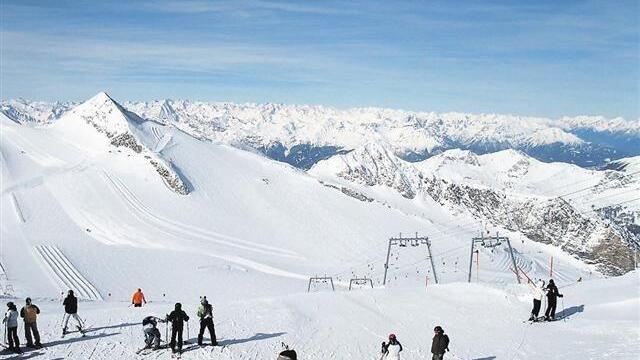Image: Kremsner
The planned expansion of glacier ski areas has caused loud (political) discussions in Tyrol and beyond its borders in recent years. Now there are new expansion plans for the Pitztal and Kaunertal glaciers. The glaciologist of the Austrian Academy of Sciences (ÖAW), Andrea Fischer, stated in the APA interview that the “ecosystem on the ice can no longer be saved” and that a ski area does not affect snowmelt and glacier retreat.
From their point of view, the discussion is more about the “preservation of a landscape” and is a “question of social values”. If the 1.5-degree target cannot be met – as the most recent report by the Intergovernmental Panel on Climate Change (IPCC) had predicted – then the eastern Alpine glaciers will be gone by the end of the century at the latest, but probably by 2050. “The only measure that what could prevent this are really efficient measures to mitigate climate change,” Fischer stated, emphasizing the importance of nature conservation.
This winter was a “runaway”
However, she described this winter’s particularly low-precipitation winter as an “outlier”. There is 60 percent less snow on the glaciers of the main Alpine ridge than the climatological average for the past 30 years. But these values are “locally different,” reported Fischer. The situation is “relatively normal” on the Hoher Dachstein in the north-east and in the Glockner area. For the glaciers, the melt in summer is essential, and snow can still fall until June.
With regard to the construction of glacier ski areas, the “argument of glacier protection has become obsolete because you can no longer protect the glaciers from people. Whether you ski on a glacier or not” is not life-threatening for the “existence of the glacier “. The glaciologist also noted that even when the glacier is gone, a ski lift can operate there. The operators would have to reckon with the fact that “no snow falls for a year or two”.
“Courage to make a political decision”
However, Fischer pointed out that when the glacier recedes, certain sub-areas could become temporarily unstable – for example when permafrost appears – or that sediments could be set in motion in the event of heavy precipitation. But she was “not aware of any study” that would show that natural hazards would change, for example, due to slope preparation.
However, these issues would be scrutinized in the EIA procedures. However, the planned and now canceled “glacier marriage” between the Pitztal and Ötztal glaciers gave the impression “that people who live in the Alps are destroying nature in an uncontrolled manner”. On the contrary, there are “very strict guidelines on how procedures are conducted,” said Fischer. However, she would often wish for more “courage to make a political decision” in the EIA procedure, “because there are always advantages and disadvantages”. In many cases, too much attention is paid to “relatively small details that obscure the big picture”.
snow farming
The fact that procedures take ten years or more would “slow down the transformation of the energy system very much”, she also said. She understands project applicants and authorities who are sometimes “seized with a kind of desperation” when there are “ten cubic meters of files” to be assessed at the end. “A certain degree of honesty in a discussion of values would do us good and improve the efficiency of the process,” advised the scientist.
However, she did not want to make any assessment of the existing expansion plans. In any case, the mass balance of the glaciers would only be “slightly improved” through snow farming – which describes the conservation of snow in summer by covering it. However, the areas that are used are very small compared to the entire glacier.
Source: Nachrichten




